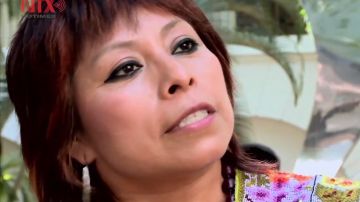Sol Ceh Moo is First Woman to Win Indigenous Literature Award
During the awards ceremony at Mexico’s Guadalajara International Book Fair (November 30 to December 8), Maya writer Marisol “Sol” Ceh Moo became the first woman to receive the Indigenous Literature of the Americas Award

Photo: Wikipedia/NotimexTV
During the awards ceremony at Mexico’s Guadalajara International Book Fair (November 30 to December 8), Maya writer Marisol “Sol” Ceh Moo became the first woman to receive the Indigenous Literature of the Americas Award. Since the 2013 inception of the award, a Mexican male writer has won every year and Ceh Moo writes in Spanish, as well as, in a dialect of Mayan. Her award-winning work, Sa´Atal Maan (Lost Steps), was written in Yucatán Maya, one of some 68 indigenous languages spoken in Mexico, Publishing Perspectives reports.
In addition to the statuette, she was also given 300k pesos, organized by the University of Guadalajara, the National Institute of Indigenous Languages and the Federal Ministry of Culture.
“For someone like me, which means having to face a situation where you must express truths, and not hide events through fictitious realities or decorate them with the purpose of only pleasing, that I think is a very heavy task but I am committed to a people that gave me life and committed to those who have recognized my work,” she told Notimex in an exclusive interview in Spanish after the ceremony. “That allows me not to be afraid… because I am not afraid of life; I have died three times and I will never die again: the letters have given life, color, satisfaction and hope to the indigenous peoples. ”
Around 7 million of Mexico’s roughly 129 million population speak an indigenous language with Náhuatl being the most widely spoken, with around 1.5 million speakers. Mayan is the runner up with close to 800,000, according to the country’s National Institute of Statistics, Geography, and Informatics.
“Spanish and Maya, for me, have the same capacity because I grew up in both languages; but in the artistic genre of literature, the Mayan language is the step of recognition for a woman who has experienced oppressive situations with the same men of the Mayan-speaking population: it has been a situation in which you must leave a language to think and to dream of another, especially to achieve what you want, to benefit other people and to know that you are capable of fulfilling yourself as a human being,” she said. “Having a mother tongue that is denigrated from other points and institutions, is one of the most important elements that give us representation, dignity, identity, and origin.”
Ceh Moo has been previously recognized for her work having been awarded the Nezahualcóyotl Prize for Literature in Mexican Languages in 2014 for her novel Chen tumeen x ch´úupen / Sólo por ser mujer [Just for being a woman]. In 2007 and 2010, she received first place in the Alfredo Barrera Vásquez contest for Maya Language Narrative.
Mexico has a long history of racism toward the indigenous community, especially the Maya in Chiapas, so this win is not just for women but for a work that elevates Maya culture and the voice of the community. In response to a question about what this win means to her in the face of the daily oppression her community faces, she told Notimex:
“Well, living in Mexico in a situation of social oppression, where women every day must fight to stay alive, and still generate literary creation in a genre that is difficult to understand and accept, is really a limited satisfaction for me, but it is a process and leads me to decide even more to set foot on the ground, to be simple and sensitive: to simply be Sol, and of course to be the woman of commitment, of example and the woman of the open doors … this is how I live! ”

















